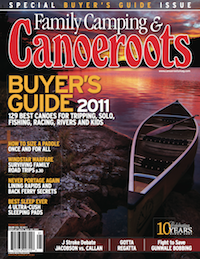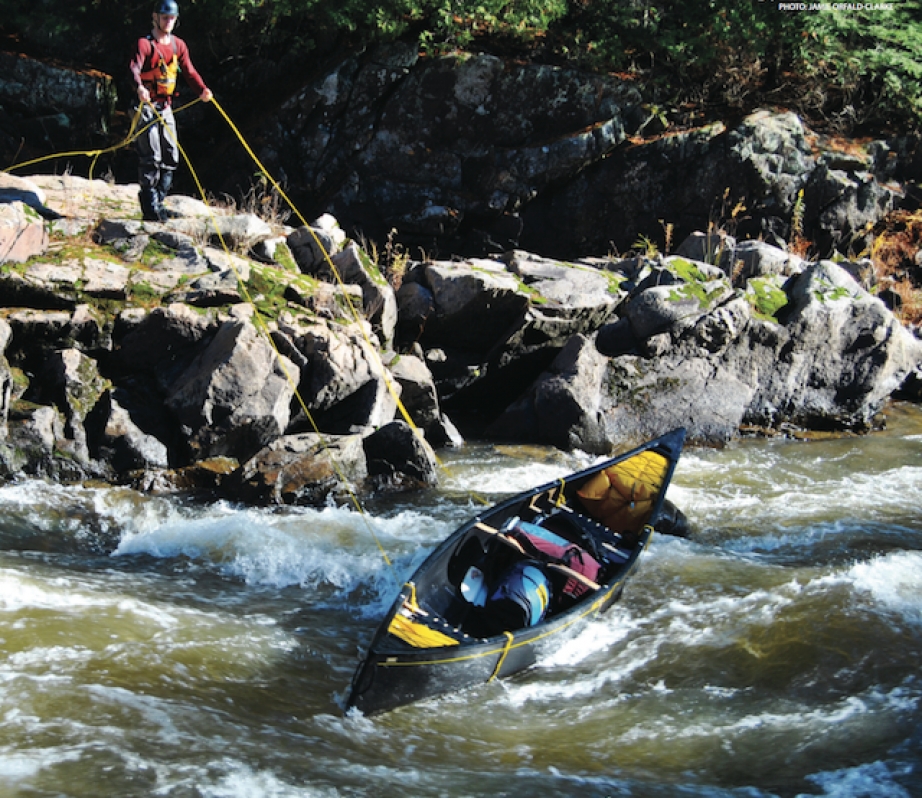Using lines to control the descent of a canoe through moving water is an age-old art that can provide a welcome alternative to portaging. Once you’ve come to recognize its potential, you may find yourself lining rapids that you would normally have carried around.
First, you’ll need a pair of lines. The rope diameter should be large enough to afford good grip: 1⁄4- to 1⁄2-inch braided floating rope works well. the length of the lines is dependent on the river and personal preference. Shorter lines are easier to manage but may leave you grasping for a runaway canoe. Longer lines allow you to move the canoe further into the current but may result in tangles if you only use a fraction of their length. Thirty- to forty-foot lines are a good compromise. Storing them in throw bags will keep them free of tangles when not in use.
When confronted with shallow or slow moving sections of river, simply tie the lines to the grab loops at each end of the canoe. Be careful not to let the canoe slip broadside into the main current or it will capsize. Tying the lines high above the waterline like this makes the boat easier to drag over rocks but more susceptible to flipping over.
For deeper, more powerful rapids, the best way to tie onto the canoe is with a bridle system. This positions the lines’ attachment point underneath the canoe, helping to prevent capsizing.
Here’s a simple way to tie a bridle: start by folding back eight feet of rope on the end of your line. Next, tie a double overhand knot halfway up the folded section of rope so that you have a big ‘Y’. Then, tie each of the short ends of the ‘Y’ to either side of the canoe’s seat, positioning the center knot under the canoe at the keel line. With a bridle at both the bow and stern, and the load slightly rearranged so that the downstream end of your canoe is heavier, you will have a very stable setup.
Much like paddling rapids, lining is a mental game. Practising in light current with only a few obstacles present, you can learn with how the canoe interacts with the lines and the water. You need to work with the river rather than against it. the same can be said of lining with a partner—effective communication is essential.
To read more on the subtleties of this technique, check out Garrett Conover’s comprehensive book Beyond the Paddle and Bill Mason’s classic Path of the Paddle.




